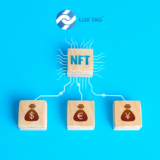Product Citizenship: Good Citizen, Bad Citizen
Imagine after getting the COVID-19 vaccine, their arm starts to swell, and their temperature spikes to 40 degrees Celsius! They immediately report to their healthcare provider. Upon getting their report, they stop the endorsement of vaccines from the same batch and contact those who already got the shot to see if they have the same symptoms. It turns out that they have received reports of allergic reactions from 80% of people getting the shot of the batch as them.
Their initiative has helped the authorities to conclude that the vaccine they have received is a bad product citizen. Meanwhile, the track and trace system embedded in the product packaging has helped the authorities to quickly trace the vaccines from the same batch and halt them from inflicting more damage. The system has saved the vaccine’s producer from experiencing major losses from having to recall all released vaccines to investigate the allergic reaction issue.
This track and trace system is one of the components that drive Product Citizenship. Wait, what is Product Citizenship? Well, just like how their country has a system to ensure each of the citizens has a unique identification, product citizenship ensures every product of a brand can be identified and be tracked. However, instead of having an identification card to verify one’s identity, a product’s identity is verified through smart packaging. QR code and NFC tagging are some examples of smart packaging.
Learn more about product citizenship and smart packaging here.
What is Product Citizenship?
In the human world, only those who are recognized as citizens can apply for an Identification Card (IC), so that the government can protect their welfare and respond to their needs accordingly. Of course, there are people without IC called illegal immigrants. The immigration department can seize them upon being discovered, and if they fail to provide relevant authentication documents the department may take legal actions, such as deportation.
The same case goes for products. As a brand owner, it is crucial to ID tag your products so that you can ensure that your products achieve your brand’s standards and can be promoted more effectively. Products without a properly displayed ID can easily be questioned in terms of their authenticity, causing customers to lose confidence in purchasing the product. An immediate example to demonstrate this situation is Halal products that failed to display sufficient documentation; shoppers can question whether the products are really halal and thus are less likely to purchase them.
Just like how there are good and bad human citizens, there will be good and bad product citizens. Good product citizens are the products that are produced according to compliances, such as still not passing the expiry dates, and safe to be consumed. Meanwhile, bad product citizens can be those which are:
- expired
- tampered
- problematic/ unsafe to be consumed
- failed to pass certification/compliance (example: Halal and/or others)
However, thanks to the implementation of product citizenship through smart packaging, they can now notify the consumer whether the products are safe to use, or alert them whenever they become a bad product citizen.
In this article, real case studies were discussed to clarify the role of good citizens and bad citizens, and to demonstrate how product citizenship will benefit you with its three main features: Track & Trace, Authenticity Verification, and Customer Engagement.
Who are the bad product citizens?

Bad citizens can come from lots of different cases. However, it is enough to understand the concept of bad citizens from these three popular culprits:
- Faulty products
- Counterfeited products, and
- Products attached to fake rumors.
Let’s take a look at them one by one.
1. Faulty Products
Covid-19 is an ongoing pandemic that drives people to be anxious, afraid, doubtful, and excited at the same time, especially regarding the emergence of COVID-19 vaccines produced by several companies globally, including ModernaTx and Pfizer-BioNTech from the United States, AstraZeneca from the United Kingdom, Sinovac and Cansino Biologics from China, and Sputnick V from Russia, in which the choice of brands in a country depends on the endorsement of its governing body.
Laboratory researches for the vaccines were conducted in quite a haste in the effort to quickly flatten the curve of COVID-19 infection and death rate. At the same time, the vaccine producers compete with each other to gain the public’s preference. So, information on the effectiveness and safety of the vaccines is very limited, which means there are unknown risks of taking them.
Thus, the companies heavily depend on the feedback and report of any adverse effects on people taking it to consistently preserve and promote their brand. An example is a case related to a batch of Moderna vaccines in the US, whereby the reported allergy cases from vaccine shots of a batch were higher than the average allergy cases per batch. Moderna quickly traced consumers of the batch, stopped further endorsement of vaccines from the same batch, and announced their efforts in resolving the issue.
If the vaccines had not implemented product citizenship, whereby they are not given any identity related to their batch, Moderna will have to call back all distributed vaccine kits and contact every single person who has gotten the shots. By doing this, Moderna would have to bear major losses from the products already distributed and from conducting quality tests on all products.
The users and prospects might also lose trust and respect towards the COVID-19 product, then spread their disappointment to the public. If that happens, they can simply switch their trust from Moderna to its rivals which can result in more losses from projected revenue and reputation.
However, in this case, Moderna only needed to take action on the affected bad product citizens which saved Moderna from all the possible losses, thanks to product citizenship.
2. Counterfeit Products
A real case study of how counterfeits can greatly damage a brand can be illustrated by the rivalry between ‘Minyak Herba Asmak Mujarab (MHAM)’ and ‘Minyak Herba Asma Mujarab (Original)’. MHAM released an ointment suggested to relieve asthma. This ointment was promoted through Facebook in early 2016 and rapidly gained popularity around June 2016.
However, in July 2016, a Facebook page was created with a similar name, ‘Minyak Herba Asma Mujarab (Original)’ promoting an almost identical ointment to MHAM’s, with an extra feature of scannable QR code to ‘prove’ its authenticity on the ointment’s label.
The latter product gained such a strong customer base that they claimed the ointment that was released by MHAM as a counterfeit of theirs. To counter that issue, MHAM decided to legally rebrand from ‘Minyak Herba Asma Mujarab’ to ‘Minyak Herba Asmak Mujarab’ or ‘MHAM’ in September 2016, and completely changed the look of the ointment’s packaging. A year later in September 2017, MHAM announced its authenticity through legal notification with the Malaysian Ministry of Health.
Unfortunately, the damage was done. To make it worse, ‘Minyak Herba Asma Mujarab (Original)’ used the situation to strengthen their position by mentioning that they are the original one since they have never changed their look. However, since MHAM was already legally registered, unlike ‘Minyak Herba Asma Mujarab (Original)’, they stopped attacking MHAM and instead of claiming each other as fakes, both brands became rivals.
To summarise, MHAM’s product, version July 2016 contributed a bad reputation to the brand itself for one major reason: the product and brand were not yet patented and registered that they cannot take any legal action against the counterfeit brand. Since the ointment did not implement product citizenship, a counterfeiter took advantage of the product’s good reputation and claimed to be its original owner. In this case, even though that version of the product was authentic, it was a bad citizen.
3. Products attached to bad publicity
When a piece of fake or twisted information is spread on a brand’s product, most of the time, the brand or the product has done nothing wrong. According to Madison College Library, one may create fake news for satire, influencing public opinion, or gaining personal profit from clickbait. However, if your product does become a victim of fake news or wild rumors, no matter how bad the product’s reputation has become, the implementation of product citizenship can help your brand to gain a second chance.
In May 2014, Malaysian Muslims were outraged when information leaked that two samples from Cadbury’s chocolate bars were contaminated with porcine DNA, even though they were halal-certified. For Muslims, pigs and their derivatives are forbidden to be consumed, so this incident was circulated as an act to disrespect Muslim’s faith. So, at that time, the products were more contaminated from the sentiment instead of the traces of pork.
Nevertheless, Cadbury Malaysia acted fast by informing the situation about the public and recalling the specifically affected batches and product variations, before conducting thorough tests of the product samples. It took about a month to clear up the case and validate their halal certificate, and it was a longer road to gain back public trust from the sentiment.
Well, at least Cadbury Malaysia only had to recall the affected batches of bad product citizens instead of all chocolate bars they sold. If the products were not given any identification, Cadbury Malaysia probably would take a lot longer and spend more resources to fix the disaster.

Referring to the three mentioned cases of Moderna’s Covid-19 vaccines, MHAM’s ointment, and Cadbury Malaysia’s chocolate bars, it can be seen that bad product citizens can imply extensive damage to the brand:
- Create trauma & distrust: Customers would stop buying the same product when the purchase experience is not as their expectations, and they are very likely to spread the bad news to their family, friends, or everyone on their social media circle
- Cut revenue: Just being late a few weeks can bring down the entire reputation of your brand. Fixing it will definitely be costly, if there is still a chance to be fixed, that is
- Damage brand’s overall reputation: The reaction of the brand towards a bad product, in terms of the speed and manner is perceived as the brand’s care and attention to its customers. If a bad citizen keep popping out repetitively or not quickly seized, a connotated impression that the brand does not care about its consumer will be embedded into the brand’s name for a long time
How can Product Citizenship protect your brand against bad citizens?

As mentioned earlier, product citizenship is a system that gives identity to their products, which can both protect and promote their brand. With product citizenship, they can:
- Quickly identify a malfunctioning product and make appropriate responses to stop its impact on your brand
- Gain insights on products with high or low demands, then use the information to focus on the promotion of good citizens, which will help to increase your company’s overall revenue
- Be trusted regarding authenticity and quality assurance of your product, since they are well-informed about the product’s identification
Learn how they can gain customer’s trust here.
If they are thinking of ways to avoid bad citizens in the first place, they can consider these steps:
- Separate the production process of their products to avoid anyone knowing the whole manufacturing process. This step can help to reduce the likelihood of counterfeits on their product
- Use smart packaging to make it easier and faster to track and record the products. Barcodes and QR codes are examples of smart packaging. Learn more on how to implement smart packaging here
- Give each of their products an individual registration to keep records and easy identification of the characteristics. This step is beneficial if there is a reported case of a faulty product and they would want to prevent it from happening again
- Track every single product to easily trace any batch of bad products, just like how Moderna tracks their COVID-19 vaccines so that they can identify any other affected victims of a bad product. Nowadays, there are a lot of tracking technologies you can use, such as RFID, NFC, and QR code
- Constantly and consistently engage with users so that they can help report any faulty product, and so that they can immediately share their concern and responsible actions to seize it. Thye can add HubSpot’s live chat feature to their website to let their customers or prospects reach you easily
It sounds like a lot to be done, but it is better to be invested in the protection of their products, than spending money to repair the damages from lack of preparation. Alternatively, they can also find a service that can do all the work for them, like BrandTag, a product by LuxTag.
Introducing BrandTag!

BrandTag is one of LuxTag’s Software-as-a-Service (SaaS) that can protect and promote your products from the effects of bad citizens with an easy-to-learn-and-apply system. The three main features of BrandTag include:
- Giving each product identification or ID that stores information such as ingredients and story that is accessible to end-users without needing a physical card
- Tracking & tracing the history of each product to validate the authenticity of your product and to allow you to see how far your product goes
- Engaging directly with consumers without the mediation of a third party, helping you to resolve any issue before it leaks to the public
So, instead of subscribing to multiple and costly services, they can get all the features to help them against bad citizens within weeks of implementation time. Remember, just like insurance coverage, the faster they act, the more protected they will be.









